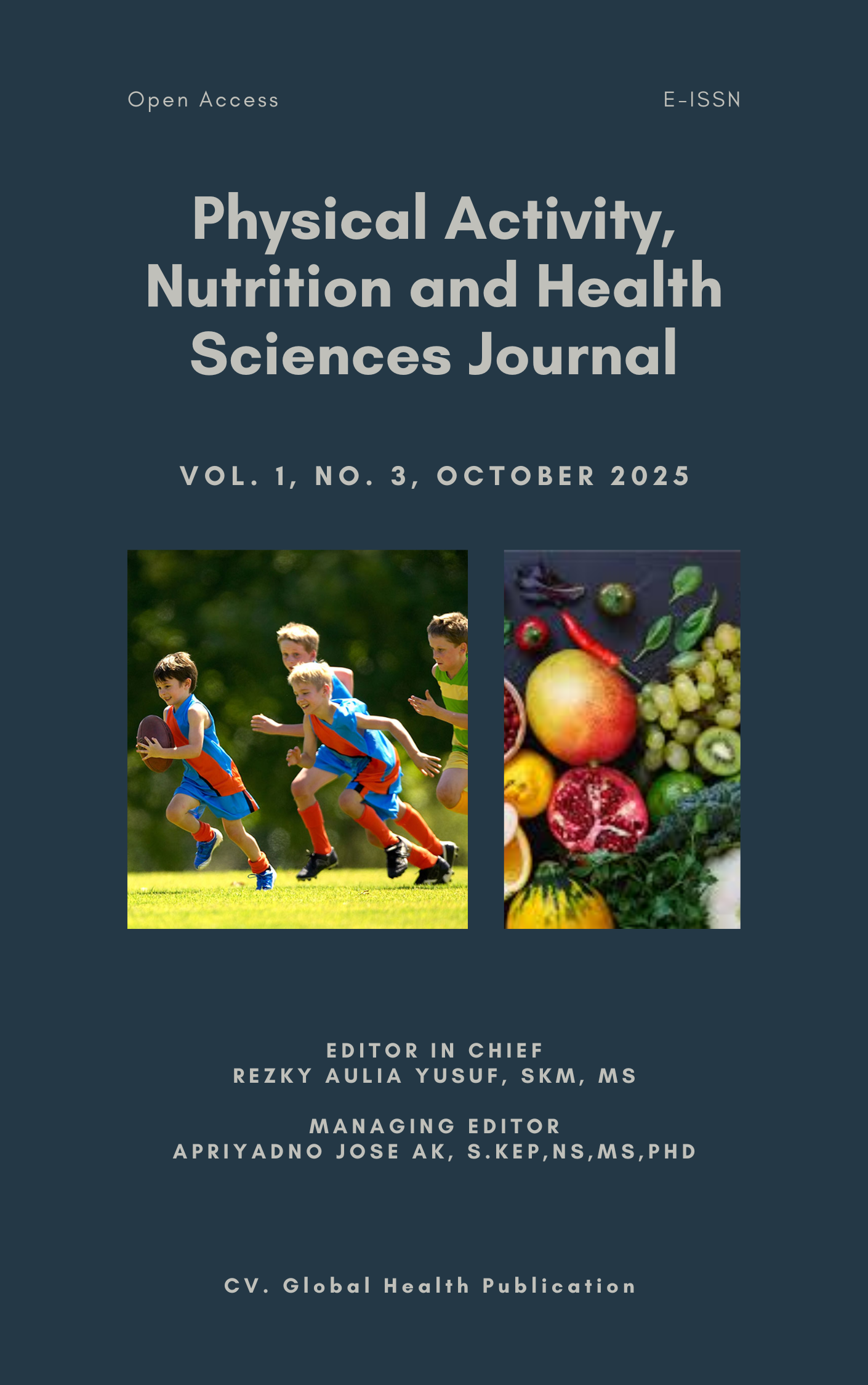Impact of Cellphone-Based Tele-Education “Germas Jantungku” On Quality of Life of Patients with Heart Failure Reduced Ejection Fraction in Makassar, Indonesia: A Quasi-randomised Trial
DOI:
https://doi.org/10.65280/panhsj.v2i3.4Keywords:
Telemedicine, Heart Failure, Quality of LifeAbstract
Improving quality of life remains a central goal in the management of heart failure (HF). This pilot study aimed to evaluate the effectiveness of tele-education delivered through the Germas Jantungku mobile application, a telemedicine initiative launched in Makassar, Indonesia. A quasi-randomised trial was conducted between May and October 2020 at Wahidin Sudirohusodo Hospital, Makassar. A total of 106 patients with heart failure with reduced ejection fraction (HFrEF) were enrolled. Of these, 53 participants installed the Germas Jantungku application and received tele-education, while 53 participants served as the control group. The primary outcome was quality of life, assessed using the HeartQoL questionnaire one month after the intervention. Participants in the tele-education group demonstrated significantly higher HeartQoL scores compared with the control group (2.31 vs. 1.94, p = 0.01). Within the tele-education group, the mean increase in HeartQoL score from baseline to one month was greater among patients aged <60 years than those aged ≥60 years (0.98 vs. 0.42), females than males (0.85 vs. 0.75), patients with higher education levels than those with mid-to-low education (0.96 vs. 0.66), and NYHA class III–IV than class I–II (0.90 vs. 0.31). A one-month tele-education intervention using the Germas Jantungku mobile application significantly improved HeartQoL scores among patients with HFrEF, with the greatest benefits observed in younger, female, higher-educated patients and those with advanced functional class (NYHA III–IV).
References
[1] Riskesdas K. Hasil Utama Riset Kesehatan Dasar (RISKESDAS). J Phys A Math Theor.2018;44(8):1–200.
[2] Ponikowski, P., Voors, A. A., Anker, S. D., et.al. ESC Guidelines for the Diagnosis and Treatment of Acute and Chronic Heart Failure. Rev Esp Cardiol (Engl Ed) 2016a, 69: p1167.
[3] Smedt DD,Kotseva K,Clays E,Pogosova N et al.The use of HEARTQOL in patient with coronary heart disease:Association with risk factor and european reference.Eur J Prev Cardiol.2016.Vol 0(00):p1-13
[4] Kallo R.Sosialisasi Aplikasi Germas Jantungku Digelar di Puskesmas Kassi Kassi.Sorotmakassar.Accessed at Februari 24th 2020 via https://sorotmakassar.com/k2-catagories/sorot-makassar/1958-sosialisai-aplikasi-germas-jantungku-digelar-di-puskesmas-kassi-kassi
[5] Melton M.Evidence-based discharge education guideline to improve adherence to self-care and decrease 30-day readmission for older heart failure patient.Doctor of Nursing Practice.2017.Vol 28:p1-96
[6] Hansen BT, Thygessen LC,Zwisler AD et al. Self-Reported health-related quality of life predicts 5-year mortality and hospital readmission in patients with ischemic heart disease.Eur J Prev Cardiol.2015.22(7):p882-9
[7] Soriano N,Ribera A,Marsal JR et al.Improvement in Health-Related Quality of Life Of Patient Admitted for Heart Failure.The HF-QoL Study.Rev Esp Cardiol.2010.Vol 63 Issue 6:p668-676
[8] Bertoncello C,Colucci M,Baldovin T et al..How does it work?Factors involved in Telemedicine home intervention effectiveness: A review of reviews.PLoS One.2018.13(11):e0207332
[9] Varon C, Alao M,Minter J et al. Effect of Telehealth on Self-Care Behavior of Heart Failure Patients. Computing in Cardiology.2014:p473-476
[10] Fedak M,Borkowska U.Use of telemedicine-based care for aging and elderly:promise and pitfall.Smart Homecare Technol Telehealth.2015.Volume 3:p91-105
[11] Goldstein KM,Gierisch JM,Zullig LL et al.Telehealth service designed for women: An evidence Map.Departement of Veteran Affairs.2017
[12] Albert N,Dinesen B, Spindler H et al.Factor associated with telemonitoring use among patients with chronic heart failure. J Telemed Telecare.2017. Vol 32(2):p283-291
[13] Greenhagh T,A’court C,Shaw S.Understanding heart failure:explaining telehealth-a hermeuneutic systematic review.BMC Cardiovasc Disord.2017.Vol 17.
Downloads
Published
Issue
Section
License
Copyright (c) 2025 Physical Activity, Nutrition and Health Sciences Journal

This work is licensed under a Creative Commons Attribution-NonCommercial-ShareAlike 4.0 International License.
CC Attribution-NonCommercial-ShareAlike 4.0










